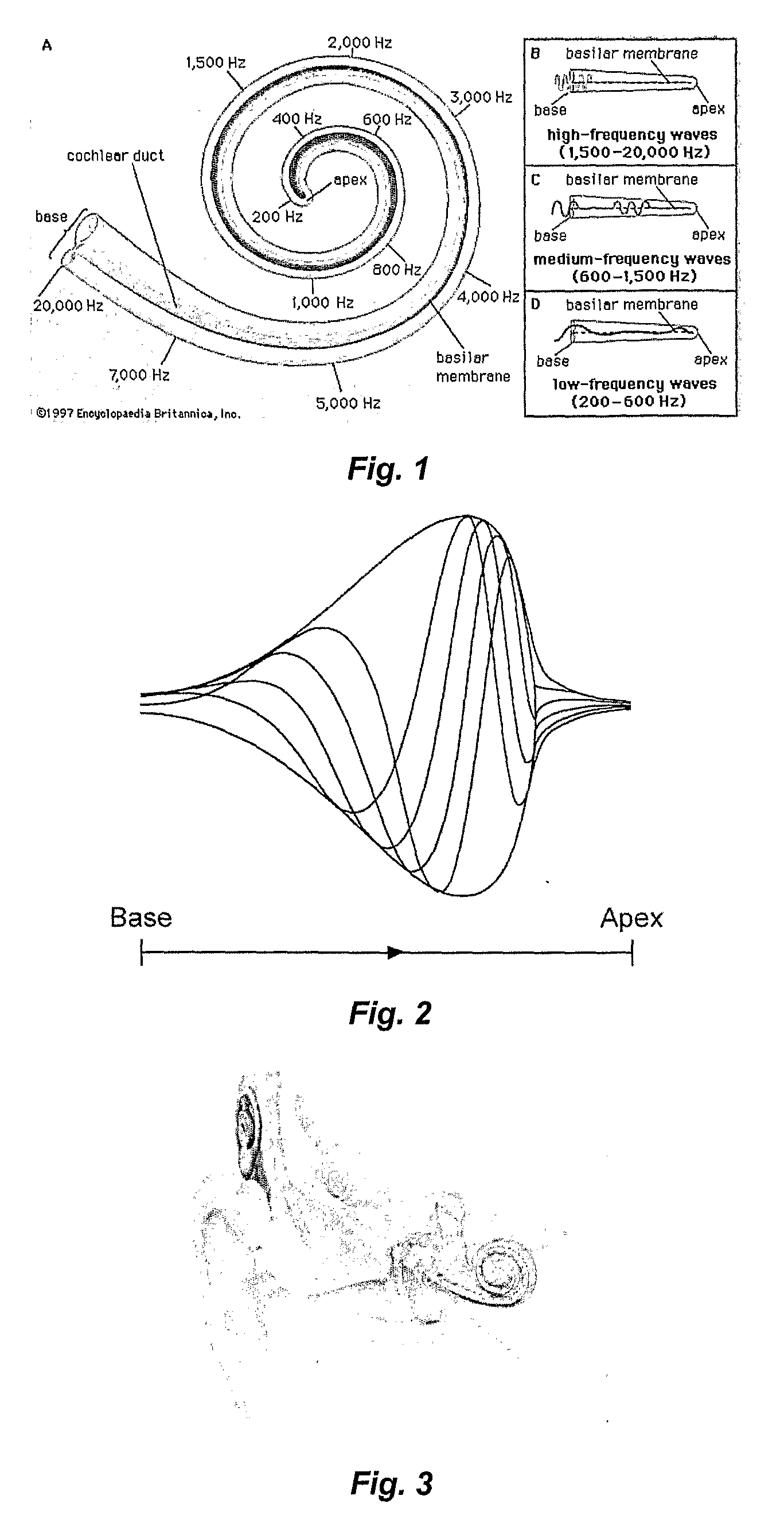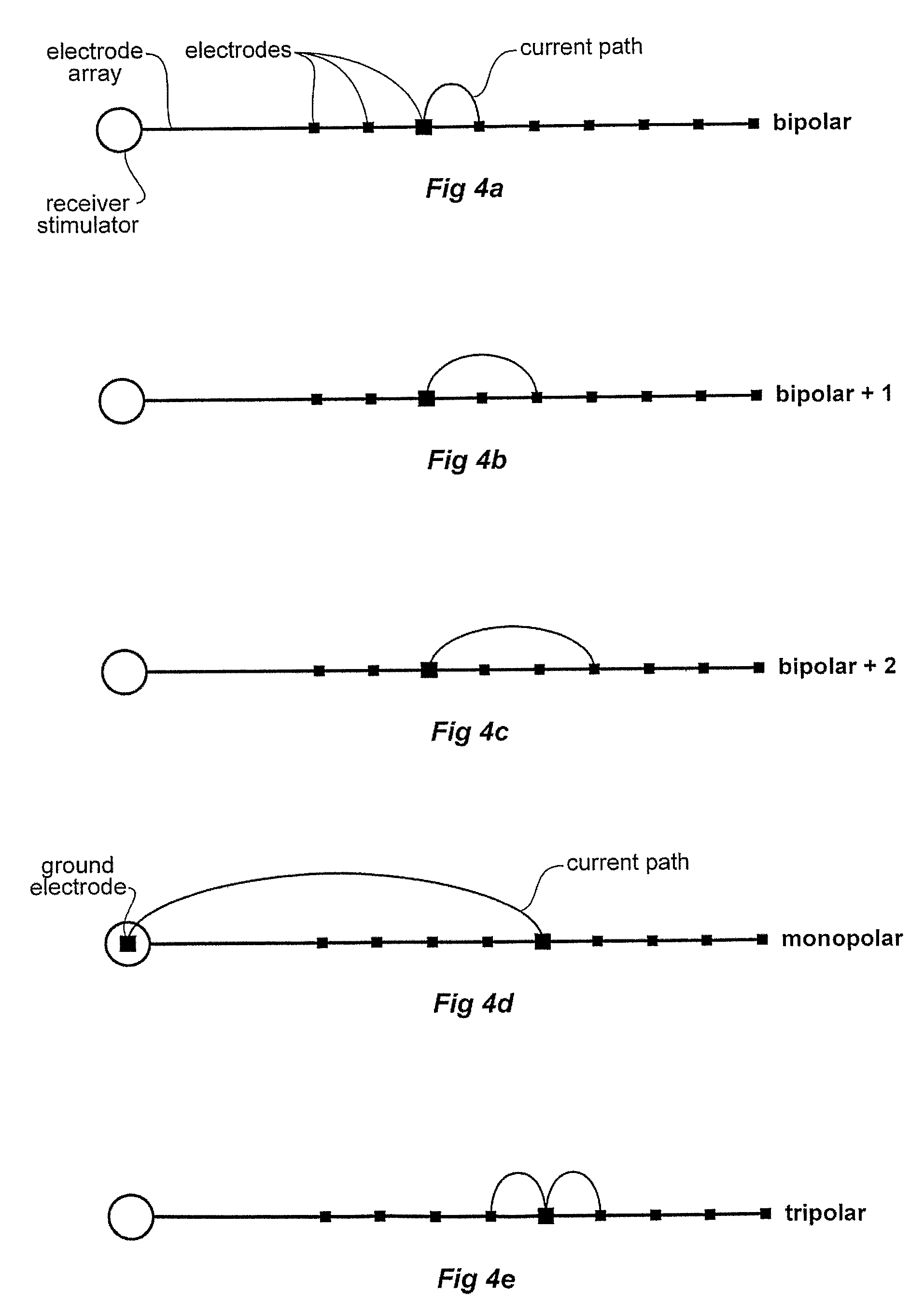Sound processing method and system
a sound processing and sound technology, applied in the field of cochlear implants, can solve the problems of difficult recognition, perception and appreciation of environmental sounds, and often deep deafness, and achieve the effects of improving hearing, reducing hearing loss, and improving hearing
- Summary
- Abstract
- Description
- Claims
- Application Information
AI Technical Summary
Benefits of technology
Problems solved by technology
Method used
Image
Examples
Embodiment Construction
[0066]Within this description the term nerve fibre and other terms such as auditory neuron / spiral ganglion neuron / auditory nerve fibre are to be considered equivalents for the purposes herein and most commonly the term neurons will be used to represent the above features of the cochlea region of the human body.
[0067]By way of example FIG. 1 depicts a cochlea and the frequencies that are detected by different parts of the cochlea are identified. It will be noted that the higher frequencies are detected by the apical part of the cochlea and the lower frequencies are detected by the basal part of the cochlea.
[0068]FIG. 2 depicts a travelling wave concept along the cochlea aqueduct. Temporal aspects can be introduced into the disclosed coding strategy by temporal weighting of the excitability along the electrode array based on spectral phase delays / shifts and the travelling wave concept known from the physiological, biophysical and psychophysical literature.
[0069]FIG. 3 depicts a cochle...
PUM
 Login to View More
Login to View More Abstract
Description
Claims
Application Information
 Login to View More
Login to View More - R&D
- Intellectual Property
- Life Sciences
- Materials
- Tech Scout
- Unparalleled Data Quality
- Higher Quality Content
- 60% Fewer Hallucinations
Browse by: Latest US Patents, China's latest patents, Technical Efficacy Thesaurus, Application Domain, Technology Topic, Popular Technical Reports.
© 2025 PatSnap. All rights reserved.Legal|Privacy policy|Modern Slavery Act Transparency Statement|Sitemap|About US| Contact US: help@patsnap.com



